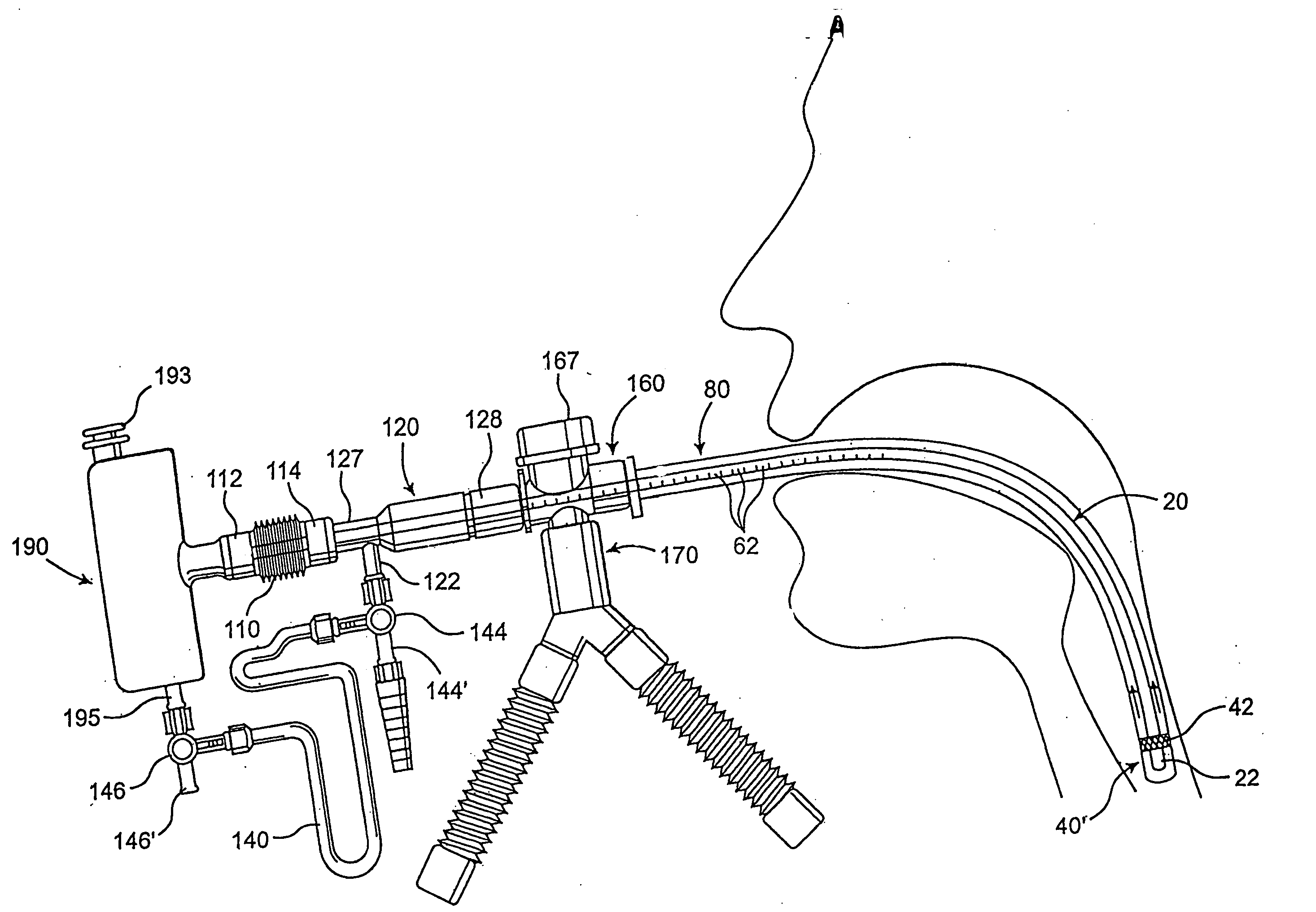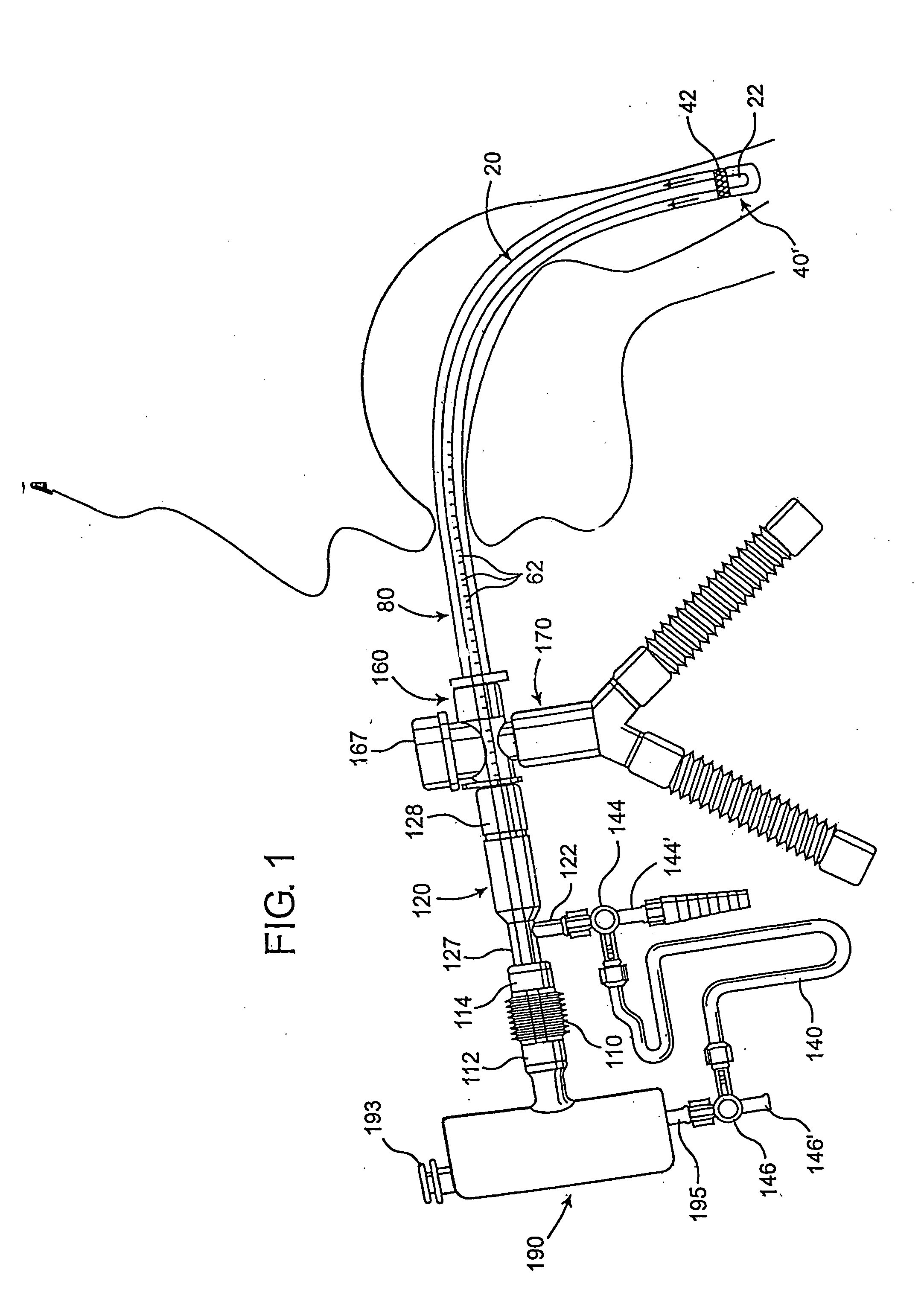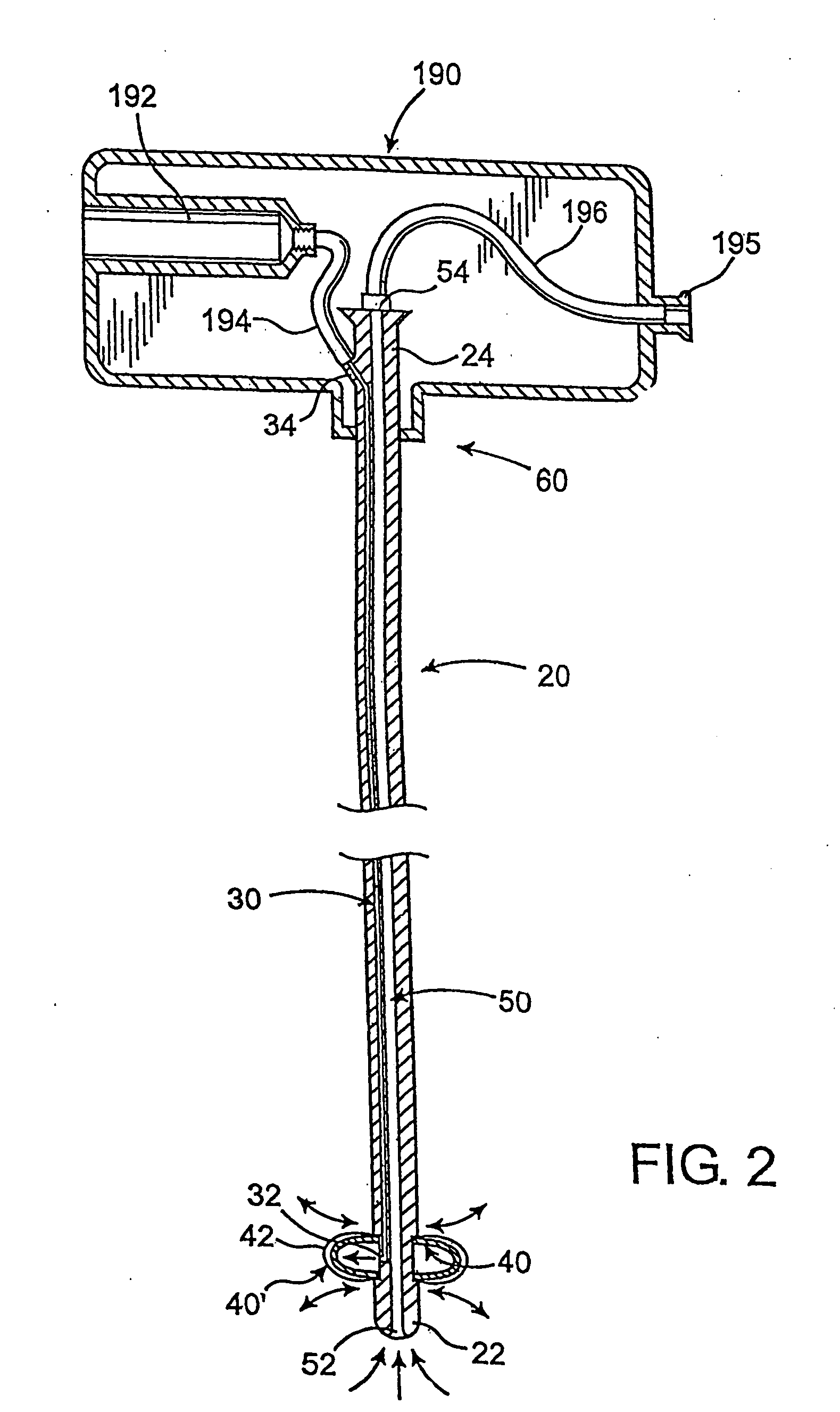Endotracheal tube cleaning apparatus
- Summary
- Abstract
- Description
- Claims
- Application Information
AI Technical Summary
Benefits of technology
Problems solved by technology
Method used
Image
Examples
Embodiment Construction
[0043] Shown throughout the Figures, the present invention is directed toward an endotracheal tube cleaning apparatus, generally indicated as 10. In particular, the endotracheal tube cleaning apparatus 10 is constructed for use with an endotracheal tube 80 that is conventionally utilized to enable a patient to breathe, and as such, is generally inserted down the throat of a patient as illustrated in FIG. 1. Such an endotracheal tube 80 is preferably of the type including a flow through passage 82 having an interior wall surface 83 that defines its interior diameter. Generally, however, after prolonged periods of use, the endotracheal tube 80 will exhibit a buildup of secretions 85 that form on the interior wall surface 83 and can thereby obstruct airflow through the flow through passage 82. The endotracheal tube cleaning apparatus 10 of the present invention, among other functions, is structured to facilitate the removal of those secretions 85 in a convenient and effective manner.
[...
PUM
 Login to View More
Login to View More Abstract
Description
Claims
Application Information
 Login to View More
Login to View More - R&D
- Intellectual Property
- Life Sciences
- Materials
- Tech Scout
- Unparalleled Data Quality
- Higher Quality Content
- 60% Fewer Hallucinations
Browse by: Latest US Patents, China's latest patents, Technical Efficacy Thesaurus, Application Domain, Technology Topic, Popular Technical Reports.
© 2025 PatSnap. All rights reserved.Legal|Privacy policy|Modern Slavery Act Transparency Statement|Sitemap|About US| Contact US: help@patsnap.com



